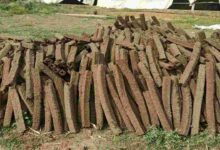This woman farmer left chemical farming and made her mark in organic farming
Organic Farming: Kadhar, a small village in the Mandi district of Himachal Pradesh, has today become a role model for the entire country. Nestled between the subdivisions of Joginder Nagar and Padhar, the village is home to just 14 households, yet together these people have transformed the area to a great extent. The women of Kadhar were the real driving force behind transforming this community into a natural agricultural paradise.

Saying goodbye to chemical farming
The farmers of Kadhar, too, were dependent on chemical pesticides and fertilizers until a few years ago. However, Rajni Devi and other rural women learned natural farming and started practicing it on their own. The excellent results of the first year boosted the morale of the entire village and eventually everyone stopped chemical farming.
Low cost and high income
The fields of Kadhar village now grow traditional crops such as wheat, barley, maize, peas, potatoes, soybeans, kidney beans and kodra. As cow dung and cow urine have now become the main ingredients of farming, agricultural costs have reduced significantly. These resources are free, as every household has a desi cow.
Government support has raised farmers’ hopes
Lalit Kumar, block technical manager of the ATMA project, claims that Kadhar village has been officially designated as the best place for natural farming. So far, 3,376 farmers of the Drang block have joined this effort.
The government is giving substantial subsidies for projects such as the purchase of desi cows, the purchase of plastic drums and the construction of cowshed floors in an effort to promote natural farming. Apart from this, more than 1,500 farmers have received subsidies of more than Rs 22 lakh.
Khadar’s story of change
Kadhar village has shown that if a village is given the right direction and attention, it can become a model for the entire country. The women’s initiative here has become a new source of inspiration for the entire region. It represents not only a change in agricultural practices but also a change in attitude.

